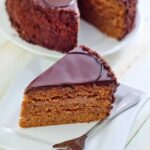Buttercream icing is a crucial element in cake decorating, as it not only adds flavor but also plays a significant role in the overall appearance of the cake. The question that often arises is, should you chill buttercream icing before decorating a cake? Chilling buttercream icing can have numerous benefits that affect both the visual aesthetics and the structural integrity of the final product.
Understanding what buttercream icing is and its various types is essential in comprehending the significance of chilling it before decorating. Buttercream icing typically consists of butter, powdered sugar, flavorings, and sometimes milk or cream. The different types include American buttercream, Swiss meringue buttercream, and Italian meringue buttercream, each with its own unique characteristics and uses.
Chilling buttercream icing can significantly impact the consistency and stability of the icing, making it easier to work with when decorating a cake. By cooling down the mixture, the fats in the butter firm up which helps hold intricate designs and piping work without melting or losing shape easily. Additionally, chilling allows any air bubbles trapped during mixing to escape, resulting in a smoother finish on the cake’s surface.
What Is Buttercream Icing
Buttercream icing is a popular choice for cake decorators due to its smooth texture, versatility, and ability to hold intricate designs. This delicious frosting is made from simple ingredients such as butter, powdered sugar, vanilla extract, and milk or cream. The key to a good buttercream icing is the ratio of butter to powdered sugar, which determines the consistency and sweetness of the final product.
There are several different types of buttercream icing that can be used in cake decorating. American buttercream is the most simple and commonly used, made with just butter, powdered sugar, and vanilla extract. Swiss meringue buttercream involves heating egg whites and sugar over a double boiler before whipping into a light and airy frosting.
Italian meringue buttercream incorporates a hot sugar syrup into whipped egg whites for a stable and fluffy icing. Finally, French buttercream includes egg yolks for a rich and creamy texture.
Chilling buttercream icing before decorating a cake can have several benefits. By chilling the icing, it becomes firmer and more stable, making it easier to spread and pipe onto the cake without losing its shape. This is particularly helpful when creating intricate designs or decorations that require precise placement. Additionally, chilling the buttercream can help it hold up better in warm environments, preventing potential melting or drooping issues during presentation.
The Benefits of Chilling Buttercream Icing Before Decorating a Cake
Buttercream icing is a crucial element in cake decorating, adding both flavor and decorative flair to any baked creation. However, many bakers often wonder whether they should chill buttercream icing before decorating a cake. Chilling buttercream icing can actually offer several benefits that can greatly enhance the appearance and structure of your final product.
One of the main advantages of chilling buttercream icing before decorating a cake is that it helps to improve the consistency and stability of the icing. When buttercream is chilled, it becomes firmer and easier to work with, making it less likely to sag or melt while decorating your cake. This is especially important if you plan on using intricate piping techniques or creating elaborate designs that require precise detailing.
Additionally, chilling buttercream icing can also help it hold its shape better once applied to the cake. This means that your decorations will stay in place more effectively, giving you more control over the final look of your dessert. Whether you are making swirls, rosettes, or any other design with buttercream icing, chilling it beforehand can make the process smoother and result in a more professional finish.
| Benefits of Chilling Buttercream Icing | Effects |
|---|---|
| Improved consistency and stability | Firmer and easier to work with |
| Better shape retention | Decorations stay in place effectively |
Does Chilling Buttercream Icing Impact the Flavor of the Cake
Chilling buttercream icing before decorating a cake is a common practice among bakers to ensure the frosting holds its shape and provides a smooth finish. However, one concern that may arise is whether chilling the icing affects the flavor of the cake itself. The good news is that, when done correctly, chilling buttercream icing should not have a significant impact on the overall taste of the final product.
Here are a few reasons why chilling buttercream icing does not typically affect the flavor of the cake:
- Butter: Butter, a key ingredient in buttercream icing, can absorb flavors from other foods in the fridge if left uncovered. To prevent this, make sure your buttercream is well-covered before chilling.
- Sugar: Sugar acts as a preservative in frosting, helping to maintain its taste and consistency even after being chilled. Make sure your icing has enough sugar to balance out any possible flavor changes.
- Vanilla extract: If using vanilla extract in your buttercream, be mindful that chilling can sometimes mute its flavor. Consider using quality vanilla extract or adding a bit more for an extra boost after chilling.
Overall, as long as proper storage techniques are followed and ingredients are carefully selected, chilling buttercream icing should not drastically alter the delicious taste of your cake. So feel free to chill your frosting with confidence knowing that it will still delight your taste buds once it’s time to indulge in that beautifully decorated cake.
Tips for Chilling Buttercream Icing Properly
Choosing the Right Container
When it comes to chilling buttercream icing, selecting the appropriate container is crucial. Opt for an airtight container that is large enough to hold the amount of icing you are working with. It is important to minimize air exposure to prevent the icing from drying out or absorbing any unwanted odors from the refrigerator.
Proper Storage Technique
After preparing your buttercream icing, transfer it into the airtight container. Use a spatula to smooth out the top surface of the icing to eliminate any air pockets. To further protect the consistency of the icing, place a piece of plastic wrap directly onto the surface before sealing the container with its lid.
Chilling Time
Once your buttercream icing is properly stored in the container, it is time to refrigerate it. The recommended chilling time for buttercream icing before decorating a cake is around 1-2 hours. This period allows the icing to firm up slightly, making it easier to work with when decorating your cake. However, be mindful not to chill it for too long as overly chilled frosting can become too stiff and difficult to spread on your cake.
By following these step-by-step instructions for chilling buttercream icing properly, you can ensure that your cake decorating process goes smoothly and results in beautifully decorated cakes with perfectly textured and stable buttercream frosting that holds its shape well. Remember that each step is essential in achieving optimal results when using chilled buttercream icing for decorating cakes.
How Long Should You Chill Buttercream Icing Before Decorating
When it comes to decorating a cake with buttercream icing, one crucial factor to consider is the chilling time. Properly chilling the buttercream icing can significantly impact the outcome of your cake decoration. The question of how long should you chill buttercream icing before decorating is essential for achieving the desired consistency and stability in your icing.
To ensure that your buttercream icing is ready for decorating, it is recommended to chill it for at least 30 minutes to an hour. This allows the butter in the icing to firm up slightly, making it easier to work with when piping or spreading on the cake. However, depending on the temperature of your kitchen or the specific recipe you are using, you may need to adjust the chilling time accordingly.
Here are some step-by-step instructions on how to properly chill buttercream icing for decorating:
- Once you have prepared your buttercream icing, transfer it into an airtight container.
- Smooth out the surface of the icing and cover it with plastic wrap, pressing it directly onto the surface of the icing to prevent a crust from forming.
- Place the container in the refrigerator and allow the buttercream icing to chill for at least 30 minutes before decorating your cake.
By following these guidelines and allowing your buttercream icing an adequate chilling time, you can ensure that your cake decoration process goes smoothly and yields professional-looking results. Remember that while chilling buttercream may take some extra time, it can make a significant difference in achieving beautifully decorated cakes every time.
Alternatives to Chilling Buttercream Icing
When it comes to decorating a cake, achieving the right consistency of buttercream icing is crucial for creating beautiful designs and textures. While chilling buttercream icing can help with this, there are also alternative methods that can be used to achieve the desired consistency without the need for chilling. These alternatives can come in handy when you’re short on time or simply prefer not to chill your icing.
Using a Different Type of Buttercream
One alternative to chilling buttercream icing is to use a different type of buttercream that naturally has a stiffer consistency. Swiss meringue buttercream, for example, is known for its silky smooth texture and ability to hold its shape well without the need for chilling. This type of buttercream is made by cooking egg whites and sugar before whipping in softened butter, resulting in a stable frosting that is perfect for piping and decorating.
Adding Cornstarch or Powdered Sugar
Another alternative method for achieving a firmer consistency in your buttercream icing is to incorporate either cornstarch or powdered sugar into the recipe. By adding small amounts of these ingredients at a time and adjusting until you reach the desired texture, you can thicken your buttercream without needing to chill it. This method allows you to have more control over the icing’s consistency and ensures that it will hold up well during decoration.
Using Shortening Instead of Butter
If you are looking for an alternative to chilling buttercream icing that doesn’t involve changing the recipe significantly, using shortening instead of butter can help achieve a stiffer consistency. Shortening has a higher melting point than butter, which makes it more stable at room temperature.
By replacing some or all of the butter in your recipe with shortening, you can create a firmer icing that holds its shape well without needing to be chilled. Keep in mind that using shortening may alter the flavor slightly, so it’s best to test this method out beforehand to ensure it meets your preferences.
Conclusion
In conclusion, the decision to chill buttercream icing before decorating a cake can significantly impact the final outcome of your baked creation. By understanding the benefits of chilling, such as improving the consistency and stability of the icing, you can elevate the overall presentation of your cake. While some may argue that chilling buttercream icing could potentially affect the flavor of the cake, many find that it is a small trade-off for achieving beautifully decorated desserts.
Properly chilling buttercream icing involves following specific steps to ensure the best results. From allowing the icing to come to room temperature before refrigerating to covering it securely to prevent any unwanted flavors from seeping in, these tips will help you achieve smooth and workable icing when it’s time to decorate. The ideal chilling time for buttercream icing typically ranges from 30 minutes to an hour, although this may vary based on personal preference and environmental factors.
While chilling buttercream icing may be the preferred method for many bakers, there are alternatives available for those who wish to avoid this step. Options such as using stabilized whipped cream or incorporating shortening into your recipe can also result in smooth and easily decoratable icing.
Ultimately, whether you choose to chill your buttercream icing or explore other methods, what matters most is creating a cake that not only looks stunning but also tastes delicious. So next time you’re faced with the question “should you chill buttercream icing before decorating a cake,” consider your desired outcome and choose the technique that best suits your needs.
Frequently Asked Questions
Should I Refrigerate Buttercream Frosting Before Piping?
Refrigerating buttercream frosting before piping depends on the consistency you’re looking for. If you want a firmer or more stable frosting, chilling it can help achieve that. However, if you prefer a softer and smoother texture, piping at room temperature may be better.
What Happens if You Don’t Refrigerate Buttercream Frosting?
If you don’t refrigerate buttercream frosting, especially in warmer climates, it might become too soft to hold its shape when piped onto cakes or cupcakes. The frosting could melt or lose its structure, causing decorations to look droopy or messy.
Should I Put My Cake in the Fridge Before Icing?
Putting your cake in the fridge before icing can help the layers firm up, making it easier to work with and less likely to crumble during icing. Additionally, refrigerating the cake before adding frosting can prevent crumbs from mixing into the icing for a cleaner final appearance.

Welcome to my blog about home and family. This blog is a place where I will share my thoughts, ideas, and experiences related to these important topics. I am a stay-at-home mom with two young children. I hope you enjoy reading it! and may find some helpful tips and ideas that will make your home and family life even better!





